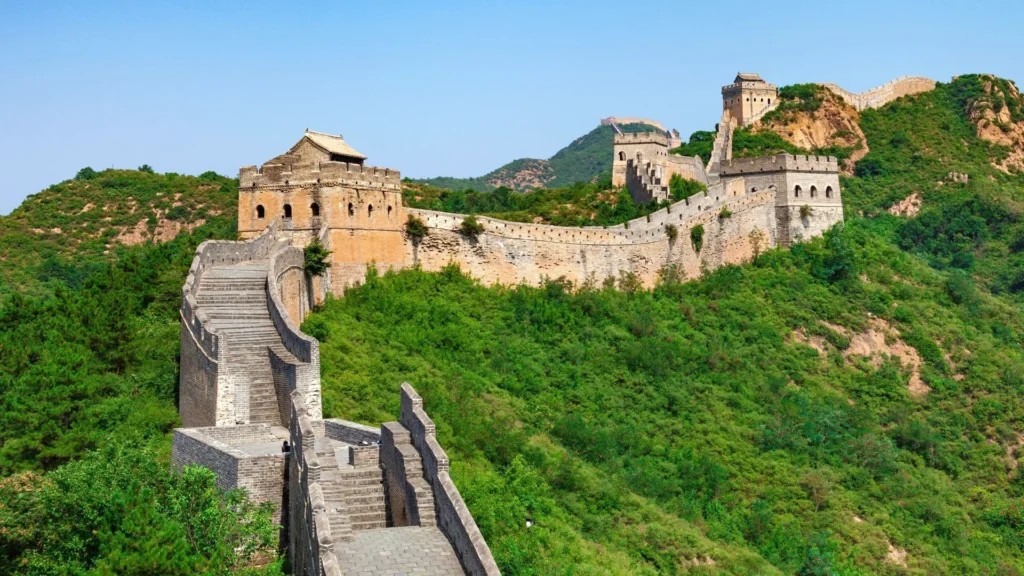
China, the world’s most populous country and one of the oldest continuous civilizations, is a land of rich history, diverse landscapes, and vibrant culture. From ancient wonders like the Great Wall and the Terracotta Army to modern marvels like the skyscrapers of Shanghai, China is a destination that offers a unique blend of tradition and modernity. This guide will take you through the best that China has to offer, from its bustling cities to its tranquil countryside, making it the perfect travel companion for anyone looking to explore this fascinating country.
1. Introduction to China
China, officially known as the People’s Republic of China, is located in East Asia and is bordered by 14 countries, including India, Russia, and Vietnam. It is the fourth-largest country in the world by land area and boasts a population of over 1.4 billion people. China’s capital is Beijing, a city that seamlessly blends imperial history with modern-day culture.
The country is known for its incredible diversity, both in terms of its geography and its people. From the towering mountains of Tibet to the vast deserts of Xinjiang, the lush forests of Yunnan to the bustling urban centers like Shanghai and Guangzhou, China is a land of contrasts. Its rich cultural heritage is reflected in its art, music, cuisine, and traditional festivals, making it a captivating destination for travelers.
2. Best Time to Visit China
China’s climate varies greatly due to its size, so the best time to visit depends on the region you plan to explore:
- Spring (March to May): This is one of the best times to visit China, with mild temperatures and blooming flowers. It’s perfect for sightseeing in cities like Beijing, Xi’an, and Shanghai.
- Summer (June to August): Summers can be hot and humid, especially in southern China. However, it’s a great time to explore the mountainous regions like Tibet, Sichuan, and Yunnan.
- Autumn (September to November): Often considered the best season to visit, autumn offers pleasant weather and stunning fall foliage, especially in places like the Great Wall, Guilin, and Hangzhou.
- Winter (December to February): Winters can be cold, particularly in northern China. However, it’s the ideal time to visit Harbin for its famous Ice and Snow Festival or to experience the unique landscapes of Inner Mongolia.
3. Top Attractions in China
China is home to some of the world’s most iconic landmarks and natural wonders. Here are some must-visit attractions:
a) The Great Wall of China
One of the Seven Wonders of the World, the Great Wall of China stretches over 13,000 miles from east to west. It is a symbol of China’s enduring strength and resilience. The most popular sections to visit are Badaling, Mutianyu, and Jinshanling, each offering stunning views of the surrounding landscapes.
b) The Forbidden City, Beijing
Located in the heart of Beijing, the Forbidden City is the largest palace complex in the world. Once the imperial palace for 24 Chinese emperors, it is now a UNESCO World Heritage site that showcases traditional Chinese architecture, art, and history. Don’t miss the Hall of Supreme Harmony and the beautiful Imperial Gardens.
c) The Terracotta Army, Xi’an
Discovered in 1974, the Terracotta Army is a collection of thousands of life-sized clay soldiers, horses, and chariots buried with China’s first emperor, Qin Shi Huang. Each figure is unique, showcasing the incredible craftsmanship of ancient Chinese artisans. The site is located in Xi’an, a city that was once the starting point of the ancient Silk Road.
d) Shanghai: The Modern Metropolis
Shanghai, China’s largest city, is a bustling metropolis known for its futuristic skyline, vibrant nightlife, and rich history.
- The Bund: A waterfront promenade lined with historic buildings, offering stunning views of the modern skyline of Pudong.
- Yu Garden: A classical Chinese garden featuring beautiful pavilions, ponds, and rockeries.
- Shanghai Tower: The second tallest building in the world, offering a panoramic view of the city from its observation deck.
e) The Li River and Guilin
The Li River is famous for its breathtaking karst mountain scenery, making it one of the most beautiful places in China. A river cruise from Guilin to Yangshuo offers picturesque views of lush hills, bamboo groves, and traditional fishing villages.
4. Cultural Experiences in China
China’s rich cultural heritage is reflected in its traditional festivals, arts, and customs. Here are some cultural experiences not to be missed:
- Chinese New Year: Also known as the Spring Festival, it is the most important holiday in China, marked by family reunions, traditional foods like dumplings, and vibrant dragon and lion dances.
- Mid-Autumn Festival: Celebrated in September or October, this festival is a time for families to gather and enjoy mooncakes while admiring the full moon.
- Tea Culture: China is the birthplace of tea, and enjoying a traditional tea ceremony is a must. Visit places like Hangzhou’s Longjing Tea Village or Chengdu’s tea houses to experience authentic Chinese tea culture.
5. Chinese Cuisine: A Culinary Adventure
Chinese cuisine is one of the most diverse and flavorful in the world, with regional variations that offer a unique culinary experience.
- Peking Duck: A famous dish from Beijing, known for its crispy skin and tender meat, served with pancakes, hoisin sauce, and scallions.
- Dim Sum: A Cantonese specialty consisting of bite-sized dishes like dumplings, buns, and rolls, often enjoyed during brunch.
- Hot Pot: A popular communal meal where diners cook raw ingredients like meat, vegetables, and tofu in a simmering pot of broth at the table.
- Sichuan Cuisine: Known for its bold flavors and liberal use of Sichuan peppercorns, which create a numbing, spicy sensation. Try dishes like Kung Pao Chicken and Mapo Tofu.
6. Natural Wonders of China
Beyond its cities, China is home to some of the world’s most stunning natural landscapes:
- Zhangjiajie National Forest Park: Known for its towering sandstone pillars, this park inspired the floating mountains in the movie Avatar. Take a ride on the Bailong Elevator, the world’s tallest outdoor elevator, for a stunning view of the park.
- Jiuzhaigou Valley: A UNESCO World Heritage site in Sichuan, famous for its colorful lakes, waterfalls, and snow-capped peaks. It’s a paradise for nature lovers and photographers.
- Huangshan (Yellow Mountains): Known for its iconic pine trees, granite peaks, and mystical sea of clouds. It’s a popular destination for hiking and photography.
7. Practical Tips for Traveling to China
- Visa Requirements: Most travelers need a visa to enter China, so make sure to apply in advance. Certain regions like Hong Kong and Macau have different entry requirements.
- Currency: The official currency is the Chinese Yuan (CNY), also known as Renminbi (RMB). Credit cards are widely accepted in cities, but cash is still preferred in rural areas.
- Language: Mandarin Chinese is the official language, but many young people in cities can speak basic English. Learning a few basic Mandarin phrases can be helpful.
- Transport: China has an extensive and efficient transportation network, including high-speed trains, subways, and domestic flights. The China Railway High-Speed (CRH) trains are a convenient way to travel between cities.
8. Conclusion
China is a country that offers a captivating blend of ancient history, diverse culture, and modern development. Whether you’re exploring the ancient wonders of Beijing, cruising down the Li River in Guilin, or savoring the flavors of Sichuan cuisine, China promises a travel experience like no other. With its warm hospitality, breathtaking landscapes, and rich traditions, China is a destination that will leave you with unforgettable memories.
So, pack your bags and embark on a journey to discover the wonders of China — a land where the past and the present coexist in perfect harmony.
